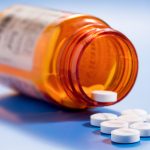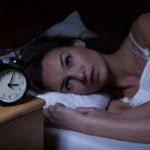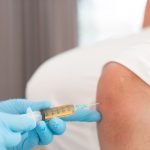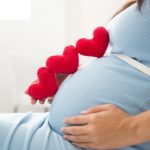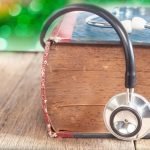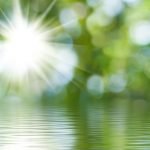The Wonder Cures of Priessnitz
Sussanna Czeranko, ND, BBE
Nature Cure Clinical Pearls
In consequence of the modern water-cure having been originated by a non-medical and uneducated man, and having been subsequently, for the most part, adopted and professed by lay practitioners, or by medical men of somewhat equivocal reputation – and yet more, from the system being held out as a panacea or cure for all diseases, with an exclusive scorn of medicinal aid – the medical profession, as a body, have naturally enough, and not inexcusably, treated it with much contempt, not to say aversion, and have shown a pretty general determination not to admit it into the catalogue of therapeutic means. – Joel Shew, 1851, p.65
To the treatment for indigestion, the person, who, by a long course of abusing the stomach, has brought upon himself weakness of that organ, must remember that a few days, or weeks, or even months, will not suffice to give him again the digestion of a ploughman or a pavier. – Joel Shew, 1851, p.149
The Abreibung, or the Rubbing Wet Sheet: this is one of the mildest and most convenient forms of a bath. A large linen sheet, of coarse material, is wrung out in cold water, and while dripping, one or more assistants immediately aid in rubbing. – Joel Shew, 1851, p.56
It’s certainly illuminating to read the early literature of our profession because those old books remind us that, despite the severe chronicity issues of our time and the persistent dangers of unfettered Big Pharma, there is much to appreciate about the broader spectrum of contemporary medical culture in North America. Naturopathic medicine is growing within that culture. Our schools are accredited and more graduates enter the field annually. Contemporary naturopathic doctors wince, as did their forebears, in the face of evidence throughout that early literature that details the often brutal and sometimes lethal nature of standard allopathic treatments. In terms of the principle of Primum non nocere within that same conventional medical treatment, we could dispute whether patient care has fundamentally improved in some areas of health care during the past century and more.
I would like in this article to highlight some cases that were presented in the mid-19th century using water-cure, in counterpoint to such frequently harmful allopathic approaches. As a case in point, let us review water-cure protocols implemented by Vincent Priessnitz. We will encounter in this literature familiar diseases referenced by new names; others will reflect the nomenclature of our period. Initially, I thought to present a variety of cases, but once launching into the material, I decided it would be more insightful, due to the sheer volume, to address only diseases of digestion. During your review of these comments, don’t forget to savor the water-cure options that have been abandoned for far too long.
It is useful to keep in mind that in the water-cure methods described below, the temperature of water used by Priessnitz never exceeded 77° F/25° C. (Rausse, 1851, p.67) A bath taken in water at the very highest temperature of 77° F/25° C would be somewhat shocking to a contemporary patient, hardly qualifying these days as a warm or tepid bath. The classification of water temperatures established by Priessnitz and his followers (Rausse, 1851, p.67) were as follows:
- Cold: all water under 55° F/13° C
- Tepid: 55° to 77° F/13° to 25° C
Dyspepsia or Indigestion
Some of the common symptoms of indigestion include pain felt in the stomach after meals. Shew cites, “headaches, giddiness and drowsiness after eating; vomiting, diarrhea, constipation, eructations, a sense of something rising in the stomach and bad taste in the mouth in the morning.” (Shew, 1851, p.147) Shew also includes in his dyspepsia list: cold extremities, depression, suicidal thoughts, nightmares, and weight loss.
The contributing causes for indigestion raised by Shew unsurprisingly are still listed almost 200 years later. In fact, I am certain that our transgressions may even have escalated with the rise of thousands of artificial food additives and unfathomable processing of our food supply. In 1851 Shew reports that indigestion’s “most common cause [was] gluttony.” (Shew, 1851, p.147) Shew’s list of what dietary habits cause indigestion makes good sense. (Shew, 1851, p.147) Causes include:
- Eating too rich food such as fine flour products
- Eating food too hot
- Eating too fast and not masticating food
- Eating at irregular times
- Eating too often
- Eating too many kinds of food at a time
- Eating stimulating condiments such as salt, pepper, and spices
- Consuming caffeine
- Sedentary habits
- Overworking, worry, anxiety
- Discontent
- Over-taxing the mind
Addressing the causes of disease were top of mind for Shew when determining the treatment plan for patients with indigestion. He states, “It hardly need be said, that as far as possible all the causes of the complaint must be removed.” (Shew, 1851, p.149) When the causes are removed, often the symptoms are cleared up without any other intervention.
Rubbing Wet Sheet
In the following case, Dr Shew used the rubbing wet sheet as one of the applications for the patient. He used a rough or coarse linen sheet for the wet sheet because of its ability to hold a considerable amount of water. The goal of the rubbing wet sheet is not to wring out all of the water, he recommends; dripping wet sheets were preferred. The wet sheet is thrown over the head or about the neck and active friction is applied by the patient in the front and by an assistant at the back. Friction continues for 1 to 5 minutes until “the skin becomes reddened and warm.” Shew continues, “This must be immediately followed briskly by a coarse dry sheet or dry clothes until the [skin] surface is perfectly dry and in a complete glow. The patient is then immediately dressed for exercise, or for bed.” (Shew [Hydropathy], 1851, p.147) The coldness of the temperature of the water used in the rubbing wet sheet is chosen based upon the patient’s strength. For those feeble and bedridden, the rubbing wet sheet can be applied while the patient is in bed.
Case: Indigestion, Constipation, Hemorrhoids, Sciatica
Shew presents a case of a 54-year-old shoemaker who developed dyspepsia early in life. His symptoms included: “constipation, low spirits, loss of appetite, furred tongue, acid stomach, pain in the bowels, with occasional spasms … He had also been troubled with piles and such was the torpor of the intestinal canal, that, for a period of 10 months at a time, he [resorted to laxative medications and enemas to relieve constipation].” (Shew, 1851, p.164)
The patient had tried the Thompsonian steaming method for 21 days without any relief to the dyspepsia. During this treatment he developed pain of his right leg, which was in a permanent state of flexion accompanied with severe pain. The pain was so severe that he had to quit work and needed a crutch to walk. “There was a constant numbness with a sensation of pricking as if from 10,000 needles and occasional attacks of agonizing pain occurring in spasms half a dozen times a day and more. While on a visit to New York City, a spasm attacked him as he was hobbling about the street, and so excruciating was the pain, that he was compelled to lie down on the sidewalk and there writhe and groan in the greatest agony.” (Shew, 1851, p.164) Opiates and more steamings did not provide relief.
He consulted Dr Shew and was prescribed several water therapies that included “cold foot bath for half an hour before breakfast, drinking during that time a quart of cold water and taking what exercise within doors that the crippled state of his limb would allow.” (Shew, 1851, p.165) Other water applications included a cold sitz bath for half an hour twice a day, and a cold douche on the affected hip; he wore an abdominal bandage and local cooling bandages throughout the day.
These water application aggravated his symptoms and he felt “as if a million insects were driven down the leg towards the feet.” (Shew, 1851, p.165) For the first 2 nights his pains increased, but despite the aggravations the patient persisted in following through with the water applications. He also added the rubbing wet sheet and wearing wet drawers one night and applying cold water affusions.
Shew recounts,
In one week, he found the pain had very considerably remitted and in a fort-night he was able to walk without crutch or staff … He assisted a carpenter who was repairing his buildings for him; and during this period, in consequence of the fatigue, to which he was exposed, he plied the cold water with double diligence. This brought on a crisis, in the form of a general eruption of little pimples exuding serum and roughening the skin with very great itching. – (Shew, 1851, p.165)
The patient continued the water applications, and within 2 months the skin, digestion, and hip pain were all resolved. From his diet he eliminated coffee, tea, and grease. Instead of eating steak and coffee for breakfast, he ate potatoes, coarse bread, and fried pudding, and reduced meat consumption to only once a day. (Shew, 1851, p.166)
This case illustrates that hydrotherapies combined with dietary changes could reverse years of suffering.
Enteritis
A description of enteritis in 1851 by Joel Shew is the following: “In simple enteritis, supposing it to be active and violent, there is acute deep-seated pain; and this may occur in various parts of the intestinal region. Although the pain is constant, yet it is aggravated at intervals; and it is increased by pressure … There is general fever and usually obstinate constipation.” (Shew, 1851, p.159) The standard of care at the time was bleeding the patient. Shew reports, “The first thing we have to do, is to bleed the patient well … and bleed from a large orifice, without any mercy.” (Shew, 1851, p.160) The objective of blood-letting was to “knock down the pulse and make [the patient] faint. After this has been done, a very large dose of calomel should be [given].” (Shew, 1851, p.160) It does not surprise us that the loss of copious quantities of blood, after which lethal doses of mercury are administered, would generate serious complications. Priessnitz had other ideas.
He advocated reducing the fever in the bowels by using “half baths or hip baths of temperature suited to the strength.” (Shew, 1851, p.160) Shew also used wet sheets, fomentations, and body-temperature colonics. He advises, “Give injections … again and again; if need be 50 times in a day; keep the bowels completely soaked. Give no food till the disease is quelled, and then begin with half a teaspoon portion.” (Shew, 1851, p.160)
Case: Severe Enteritis
Shew presents a case of his brother, whom he treated. The patient, in Shew’s words, was “fast becoming typhoid or sinking. Besides the pain and swelling of the abdomen there was severe pain in the back, the thighs, injection of blood in the eyes, thick fur upon the tongue and mental disturbance. The sleep under powerful opiates was dreamy and restless.” (Shew, 1851, p.160) The brother was given the common treatments of the time.
On arrival to the sick bed, Shew described the disease as exceedingly obstinate. The first intervention by Shew was to administer a tepid enema, so as not shock the patient, who was greatly debilitated. Tepid is about 20° F/11° C below body temperature. Shew notes, “It was astonishing how perceptibly this application cooled the body … In a few moments a large evacuation took place, notwithstanding the constipation had been obstinate.” (Shew, 1851, p.161)
Wet Girdle
Shew then applied a “wet girdle,” 4 yards long and a half-foot in width. Only 1 end of the cloth was wet with the tepid water. The wet end was first wrapped around the patient, and the dry end acted as insulation. Shew gives an account of the outcome: “The combined effect of the clyster [enema] and bandage was soon to remove all pain from the bowels and the back. Wet bandages, similar to that about the body, were put about the thighs, and strange as it may appear, in less than half an hour all pain was removed.” (Shew, 1851, p.161)
After the wet bandages, the brother rested and was then placed in a bathtub with a few inches of tepid water [50° F/10° C]. Next, he was given a friction bath that took about 5 minutes. “In this, he sat, and was quickly rubbed all over the surface, and the water was dipped up and poured over the body.” (Shew, 1851, p.161) The upper part of his body was rubbed and dried, and then the same procedure with the lower body followed. After the bath, the patient was re-bandaged and placed in a warm bed with warm applications to his feet. What ensued was a deep refreshing sleep. In the evening another enema was given hourly and all previous medicine was stopped. (Shew, 1851, p.160)
The patient was not given any food until the second day, and only by 1 or 2 spoonfuls. The food allowed was a watery gruel. In this regard, Shew warns, “[food] should be given with the greatest caution, and only of the farinaceous kind, a spoonful or two of water gruel only at a time, and this will cause mischief, if given too soon.” (Shew, 1851, p.162) On the second day, the same water applications continued. The initial doctor witnessed the water-cure treatment with great astonishment, and, in particular, “of the coating being so soon removed from the tongue.” (Shew, 1851, p.162) By the third day, the patient was mobile and was able to walk in the street with his brother who helped him with water-cure.
Closing Comments
Cures such as the one Shew has described were conducted in Gräefenberg by Priessnitz on a regular basis. Their successes generated worldwide attention and were unmatched by medical doctors who soon came in large numbers to learn his secrets of cure. Not uncharacteristic of the response of the allopathic profession to challenges to their hegemony at the time, “[Priessnitz] was declared to be illegally tampering with the public health, and ordered to be arrested.” (Shew, 1851, p.62) This particular indictment was reversed on the grounds that “Priessnitz made use of nothing in his practice except water.” (Shew, 1851, p.63) His success in curing disease baffled the medical profession, and for those doctors who came to study with Priessnitz and share his protocols and methodologies, we can only be forever grateful.
References:
Rausse, J. H. (1851). Water-cure, applied to every known disease. New York, NY: Fowlers and Wells; pp 272.
Shew, J. (1851). Hydropathy, or the Water-Cure. New York, NY: Fowlers and Wells; pp 360.
Shew, J. (1851). The Water-Cure Manual, Volume IV. New York, NY: Fowlers and Wells; pp 282.
Image Copyright: <a href=’https://www.123rf.com/profile_kzenon’>kzenon / 123RF Stock Photo</a>

Sussanna Czeranko ND, BBE, incorporates “nature-cure” approaches to primary care by including balneotherapy, breathing therapy, and nutrition into her naturopathic practice. Dr Czeranko is a faculty member working as the Rare Books curator at NCNM and is currently compiling a 12-volume series based upon Benedict Lust’s journals, published early in the last century. Her published books include: Origins of Naturopathic Medicine; Philosophy of Naturopathic Medicine; Dietetics of Naturopathic Medicine; Principles of Naturopathic Medicine; Vaccination and Naturopathic Medicine; and Physical Culture in Naturopathic Medicine. Dr Czeranko is the founder of the Breathing Academy, a training institute for naturopaths to incorporate a scientific model of breathing therapy called Buteyko into their practice. She is also a founding board member of the International Congress of Naturopathic Medicine and a member of the International Society of Medical Hydrology.




